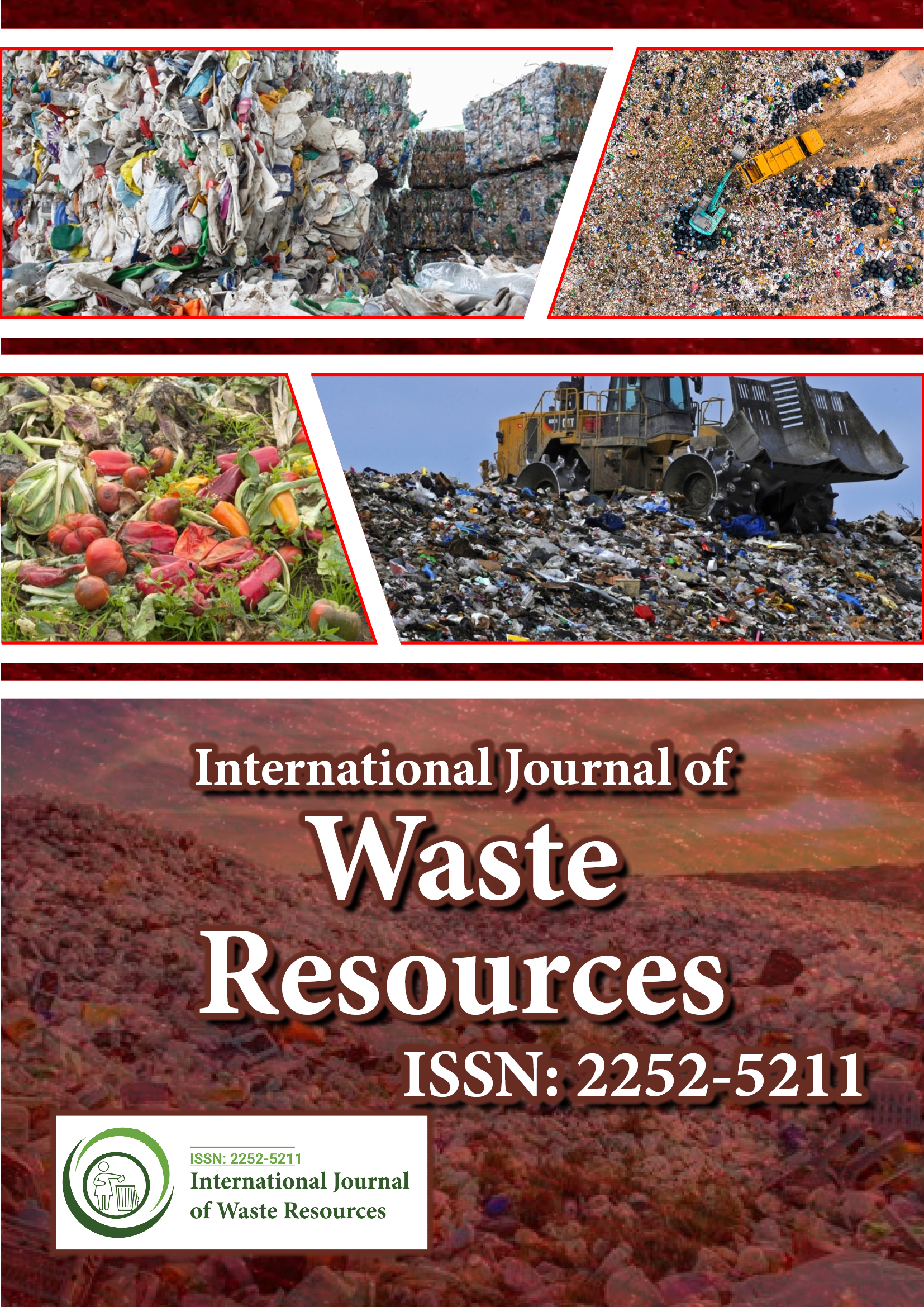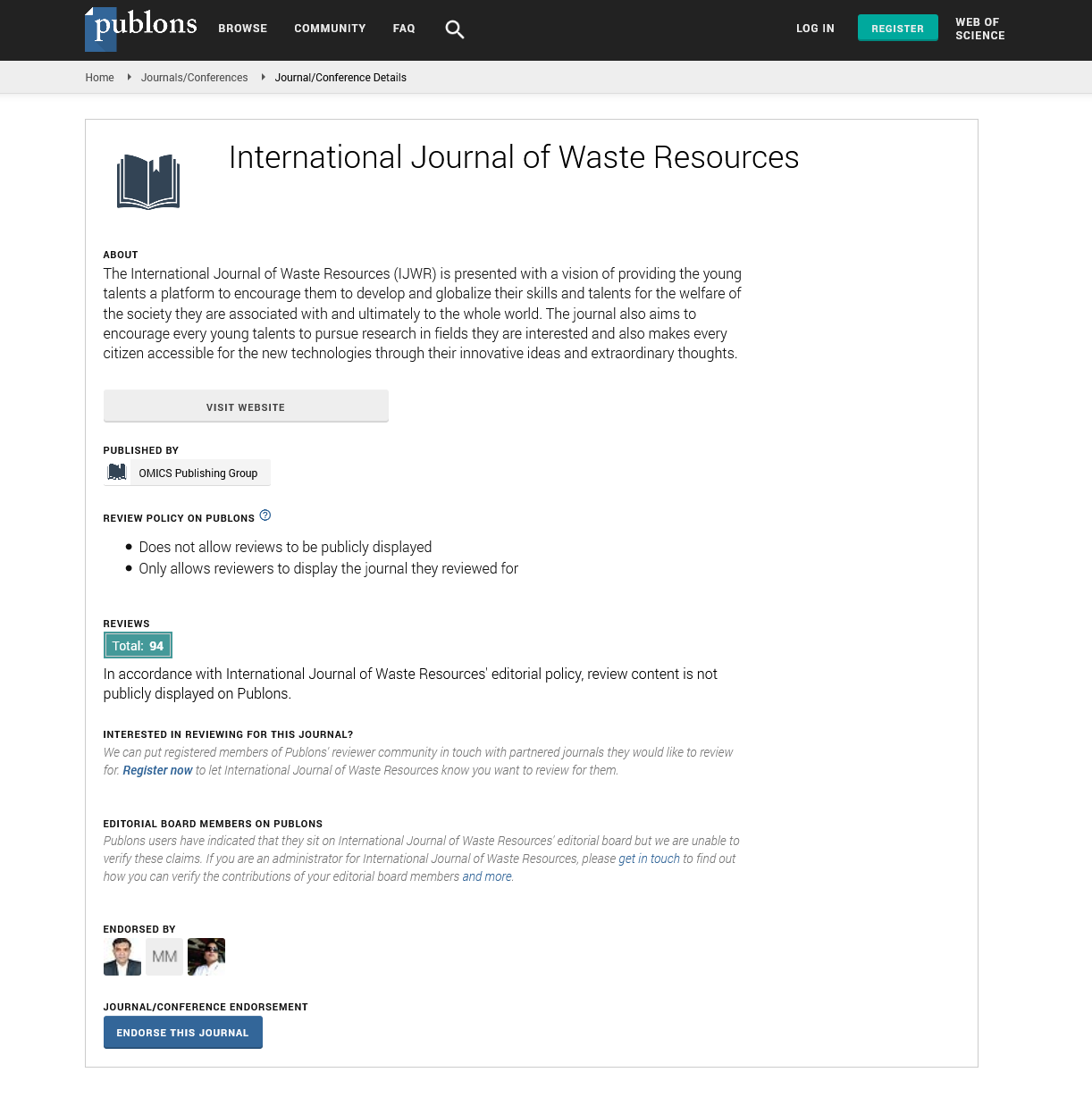Indexed In
- Open J Gate
- The Global Impact Factor (GIF)
- Open Archive Initiative
- VieSearch
- International Society of Universal Research in Sciences
- China National Knowledge Infrastructure (CNKI)
- CiteFactor
- Scimago
- Ulrich's Periodicals Directory
- Electronic Journals Library
- RefSeek
- Directory of Research Journal Indexing (DRJI)
- Hamdard University
- EBSCO A-Z
- Publons
- Google Scholar
Useful Links
Share This Page
Journal Flyer

Open Access Journals
- Agri and Aquaculture
- Biochemistry
- Bioinformatics & Systems Biology
- Business & Management
- Chemistry
- Clinical Sciences
- Engineering
- Food & Nutrition
- General Science
- Genetics & Molecular Biology
- Immunology & Microbiology
- Medical Sciences
- Neuroscience & Psychology
- Nursing & Health Care
- Pharmaceutical Sciences
Perspective - (2025) Volume 15, Issue 1
Chemical Waste Management: Ensuring Safety, Sustainability, and Environmental Protection
Shuhua Chan*Received: 31-Jan-2025, Manuscript No. IJWR-25-29254; Editor assigned: 03-Feb-2025, Pre QC No. IJWR-25-29254; Reviewed: 14-Feb-2025, QC No. IJWR-25-29254; Revised: 21-Feb-2025, Manuscript No. IJWR-25-29254; Published: 03-Mar-2025, DOI: 10.35248/2252-5211.25.15.608
Description
The rise of industrialization, agriculture, healthcare and laboratory activities has led to a significant increase in chemical waste, posing serious environmental and public health concerns. Chemical waste includes hazardous or potentially dangerous substances that must be carefully handled, treated and disposed of to prevent pollution of soil, water and air. Effective chemical waste management is essential for ensuring workplace safety, promoting environmental sustainability and meeting legal and regulatory standards.
Chemical waste can originate from a variety of sources, including manufacturing industries, academic and research laboratories, healthcare facilities, agriculture and even households. Industries such as petrochemical, paint and pesticide manufacturing generate large volumes of waste through production processes. Laboratories, both academic and pharmaceutical, produce smaller but diverse quantities of waste, including expired chemicals and cleaning agents. In agriculture, excessive use of pesticides and fertilizers contributes to runoff and soil contamination. Hospitals and clinics generate hazardous waste in the form of expired medicines, disinfectants and diagnostic chemicals. Even in homes, products like batteries, cleaners and paints contribute to chemical waste when not properly disposed of.
Depending on its properties, chemical waste is typically classified as toxic, corrosive, flammable, or reactive. These materials can pose significant risks if not properly managed. Environmental pollution is a major concern, as chemicals can leach into the soil and contaminate groundwater, affecting ecosystems and biodiversity. Health hazards are also a serious issue, with exposure potentially causing burns, respiratory problems, poisoning, or long-term illnesses such as cancer. Improper storage or disposal can lead to fires, explosions, or the release of toxic gases and contamination of food and water supplies remains a critical risk.
To manage chemical waste effectively, certain principles must be followed that emphasize prevention, safety and long-term sustainability. Reducing the use of hazardous substances and replacing them with safer alternatives can help minimize waste at its source. Segregating different types of chemical waste during collection prevents dangerous reactions and makes treatment more manageable. Safe storage practices, such as using sealed and compatible containers and keeping waste in well-ventilated areas, are essential. Proper training for personnel in handling hazardous materials ensures a safer working environment. Chemical waste must also be treated appropriately before disposal. Neutralization techniques can be applied to acids and bases, while other wastes may undergo filtration or chemical precipitation, especially in the case of heavy metals. Final disposal methods depend on the type of waste and may include high-temperature incineration, secure landfilling, or processing in specialized facilities equipped to handle specific hazardous materials.
The management of chemical waste is governed by a variety of international and national regulations designed to protect public health and the environment. The Basel Convention seeks to limit the transboundary movement of hazardous waste, while national laws such as the Resource Conservation and Recovery Act in the United States, the hazardous waste management rules in India and the European Union's Reach framework outline strict responsibilities for waste generators and handlers. Adhering to these regulations is not only a legal obligation but also a critical step in environmental stewardship.
In recent years, sustainable and innovative practices have begun to transform chemical waste management. The adoption of green chemistry focuses on designing products and processes that inherently reduce or eliminate the use of hazardous substances. Chemical recycling techniques are also being developed to break down waste into reusable raw materials. On-site treatment systems allow labs and industries to detoxify waste immediately, reducing the need for transport and large-scale disposal. Digital inventory tools help track chemical use and expiry, minimizing unnecessary stockpiling and waste generation. These approaches support the goals of a circular economy, where waste is minimized and resources are reused whenever possible.
Raising public awareness is another crucial aspect of successful chemical waste management. Educating communities about the dangers of improper disposal and promoting collection initiatives for household hazardous waste can significantly reduce environmental and health risks. When individuals and institutions understand their role and take responsibility, chemical waste becomes more manageable and less harmful.
Conclusion
In conclusion, managing chemical waste is a vital component of responsible environmental and public health policy. From industrial complexes to individual households, the proper treatment and disposal of hazardous chemicals are essential for protecting ecosystems, ensuring compliance with regulations and maintaining public safety. As we move forward, the integration of stricter policy enforcement, technological advancement and widespread public education will be key to building a safer and more sustainable future for chemical waste management.
Citation: Chan S (2025). Chemical Waste Management: Ensuring Safety, Sustainability and Environmental Protection. Int J Waste Resour: 15:608.
Copyright: © 2025 Chan S. This is an open-access article distributed under the terms of the Creative Commons Attribution License, which permits unrestricted use, distribution and reproduction in any medium, provided the original author and source are credited.

